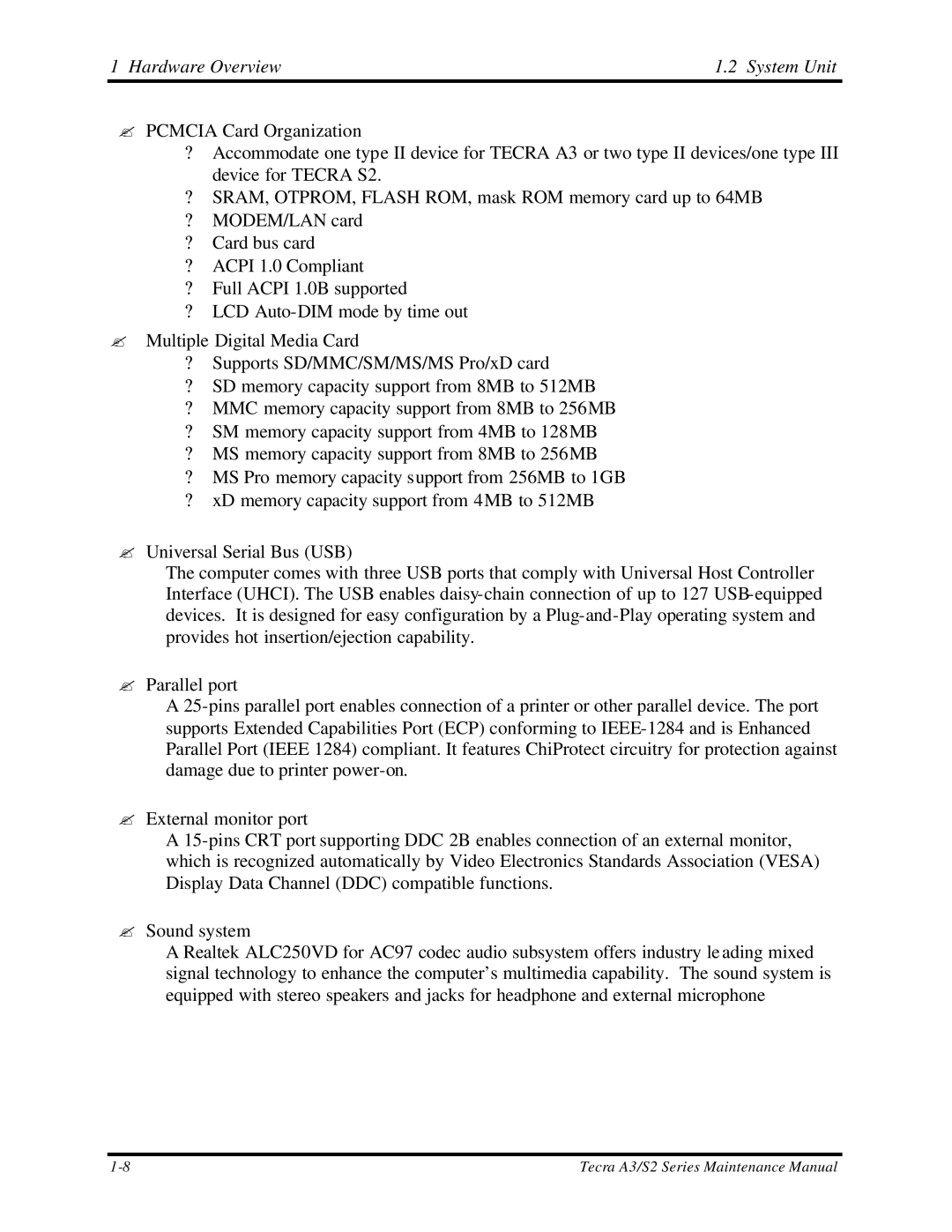1 Hardware Overview | 1.2 System Unit |
?PCMCIA Card Organization
?Accommodate one type II device for TECRA A3 or two type II devices/one type III device for TECRA S2.
?SRAM, OTPROM, FLASH ROM, mask ROM memory card up to 64MB
?MODEM/LAN card
?Card bus card
?ACPI 1.0 Compliant
?Full ACPI 1.0B supported
?LCD
?Multiple Digital Media Card
?Supports SD/MMC/SM/MS/MS Pro/xD card
?SD memory capacity support from 8MB to 512MB
?MMC memory capacity support from 8MB to 256MB
?SM memory capacity support from 4MB to 128MB
?MS memory capacity support from 8MB to 256MB
?MS Pro memory capacity support from 256MB to 1GB
?xD memory capacity support from 4MB to 512MB
?Universal Serial Bus (USB)
The computer comes with three USB ports that comply with Universal Host Controller Interface (UHCI). The USB enables
?Parallel port
A
?External monitor port
A
?Sound system
A Realtek ALC250VD for AC97 codec audio subsystem offers industry le ading mixed signal technology to enhance the computer’s multimedia capability. The sound system is equipped with stereo speakers and jacks for headphone and external microphone
Tecra A3/S2 Series Maintenance Manual |
